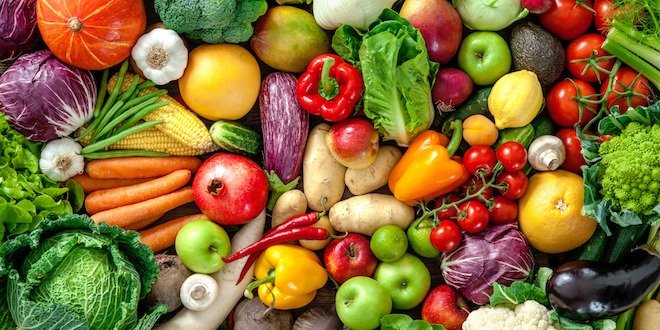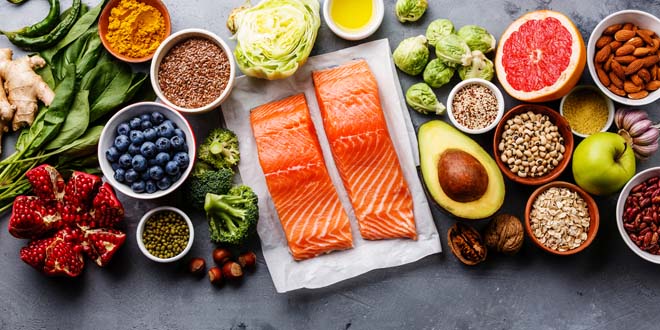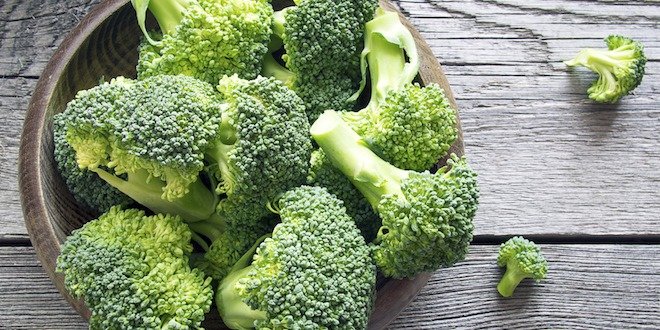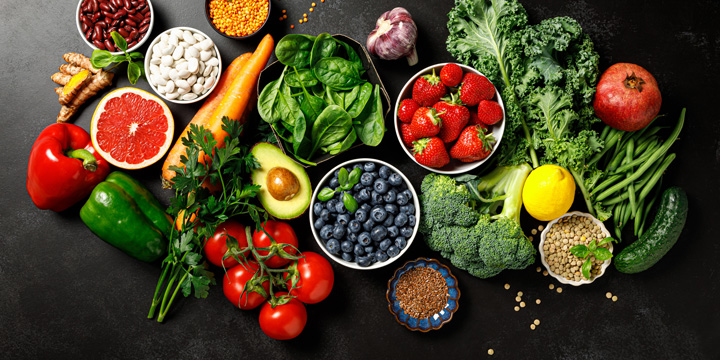
Here are 10 fruits and vegetables for diabetes that are ideal because they pack a slew of health benefits, while helping to regulate your blood sugar.
When eating fruits and vegetables, remember that fresh and raw is best whenever possible, although baking and steaming will also help retain nutrients. And if you think that fresh fruits and vegetables are mainly grown in the summer months, you might be surprised to know that there are several produce options that are available year-round in Canada.
FRUITS
1. Berries:
Rich in anti-oxidants, which help prevent cell damage in the body, blueberries and other berries are a great addition to your diabetes diet. Blueberries in particular have been shown to boost the immune system and help fight off bad cholesterol. Studies have shown that women who consumed high levels of antioxidant-rich foods such as berries, had a significant reduction in their diabetes risk. In addition, berries are filled with nutrients and are low in sugar, so they are a great way to satisfy your sweet tooth without resorting to traditional sweets.
Here are some great recipes to try that include berries:
Rhubarb Strawberry Chia Spread
Whipped Honey Ricotta Spread with Strawberries and Basil
High-Protein Blueberry Cottage Cheese Ice Cream
2. Citrus fruits:
We’ve all heard that citrus fruits are filled with vitamin C, but when it comes to the very sweet ones (e.g., oranges), you may worry about their high sugar content. Fortunately, the fibre in these fruits helps to promote satiety, and helps regulate your blood sugar by slowing absorption into the bloodstream. Some citrus fruits such as grapefruit may interact with medications you are taking, so it is important to talk to your pharmacist before adding citrus fruits into your diet.
Check out these citrus-based recipes:
Citrus Avocado Salad with Pistachios and Mint
Baked Orange Citrus Chicken Wonton Cups
3. Apples:
Fall’s favorite fruit is filled with fibre (especially if you keep the peel on) and vitamin C. Apples also contain chemicals called anthocyanins, which have been shown boost insulin, and may be protective against diabetes and obesity.
Apples, like other fruits, are still a source of carbohydrate, so try to opt for a smaller sized apple (i.e., about the size of tennis ball) and be sure to include the carbohydrates in your meal plan.
Click out this recipe for a delicious and healthy apple crisp or this refreshing apple cabbage slaw.
4. Cherries:
These delectable, bite-sized fruits also contain anthocyanins, which help control blood sugar. They also contain a multitude of nutrients, including vitamins A, C and B, as well as calcium, iron and fibre. Besides being a great snack, cherries can be added to salads or muffin and pancake recipes for added flavour and nutrients. Or you can try this heart-healthy Grilled Salmon with Cherry Salsa.
VEGETABLES
5. Leafy greens:
Increasing your consumption of leafy greens (e.g., collard greens, kale and spinach) is another way to help keep your diabetes in check. Filled with minerals and omega-3 fatty acids, they help enhance insulin secretion and regulate your blood sugar levels. These greens also regulate the production of hormones that protect against heart attack and stroke. They’re super low in calories and carbohydrates too!
Check out these recipes filled with leafy greens:
Kale and Lentil Salad with Pear and Roasted Walnuts
Chickpea Tofu Stirfry with Spinach and Zucchini
6. Sweet potato:
Rich in fibre and vitamins, sweet potatoes are another great vegetable to keep your blood sugar levels on track. They have a low glycemic index (GI), which means they won’t spike your blood sugar levels as much as regular potatoes would.
Here are some sweet potato recipes to incorporate into your diabetes menu plan:
Cauliflower and sweet potato puree
Crunchy baked sweet potato fries
Healthy sweet potato toast with lemon ricotta, raspberries and walnuts
7. Broccoli:
Not only is broccoli low in calories, it’s filled with antioxidants and packed with high levels of vitamin A and C. This green vegetable is also full of fibre, which will keep you feeling full longer.
Here are some great broccoli recipes:
One-pot creamy broccoli soup with tofu
Sauteed beef and broccoli buckwheat bowl
Roasted broccoli steaks with white beans and tangy vinaigrette
8. Asparagus:
This is another vegetable that is a great addition to your diabetes meal plan because it’s filled with vitamins, minerals, fibre and has a low GI index. In fact, one serving of asparagus provides 18% of your daily vitamin C and E. It also contains a decent amount of protein (4-5 grams per cup), which helps stabilize your blood sugar levels and keeps you feeling full. Try out this Cacio e pepe asparagus to complement your next meal!
9. Red onion:
Aside from its antioxidant properties, the red onion is another low-GI, low-calorie food that won’t throw your blood sugar levels out of whack. It contains significant amounts of vitamins C and B6, as well as being a good source of chromium, which is essential to regulating blood sugar.
10. Zucchini:
This mild-tasting, versatile vegetable is a great option when you have diabetes because it contains vitamin B, zinc and magnesium, which are key to stabilizing blood sugar levels. Zucchini also contains lutein and zeaxanthin, which are two phytonutrients that promote eye health. Zoodles are a great replacement for pasta, or even mixed half and half, to lighten the carb load. Here is a great zoodle recipe to try.
Check out these other delicious zucchini recipes as well:
Roasted zucchini fries with spicy tofu dip
Baked chicken parmesan zucchini boats
Fruits and vegetables are a cornerstone of a healthy diet—even for people with diabetes. Just keep in mind that even with all their health benefits, most of these fruits and vegetables contain natural sugar, which may affect your carb count. The key is to be mindful of portion sizes and choose whole, unprocessed options whenever possible. With the right balance, these natural powerhouses can fit beautifully into any diabetes management plan.





